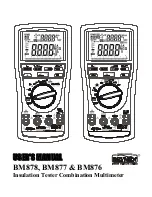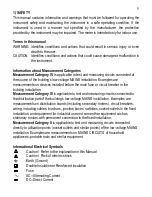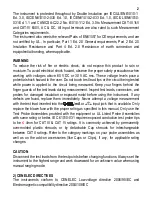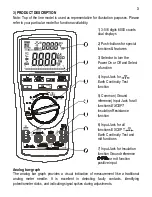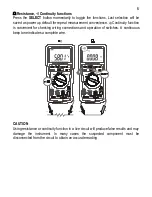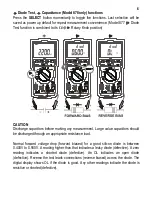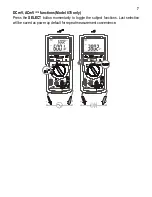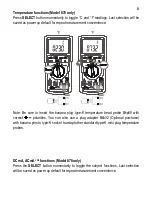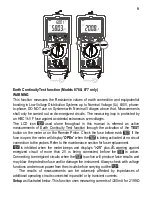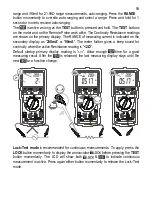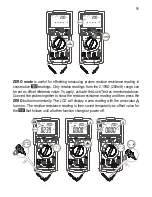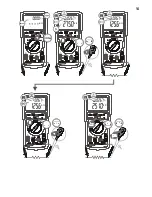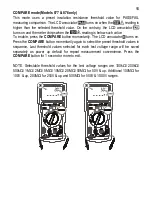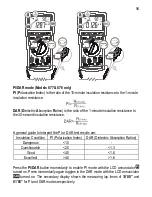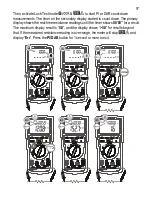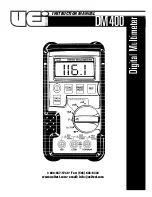
2
The instrument is protected throughout by Double Insulation per IEC/UL/EN61010-1
Ed. 3.0, IEC/EN61010-2-030 Ed. 1.0, IEC/EN61010-2-033 Ed. 1.0, IEC/UL/EN61010-
031 Ed. 1.1 and CAN/CSA-C22.2 No. 61010-1-12 Ed. 3.0 to Measurement CAT-III 1kV
and CAT-IV 600V, AC & DC. All input terminals are also rated to such Measurement
Categories requirements.
The instrument also meets the relevant Parts of EN61557 for CE requirements, and are
not certified by UL.. In particular, Part 1 Ed. 2.0 General requirements, Part 2 Ed. 2.0
Insulation Resistance and Part 4 Ed. 2.0 Resistance of earth connection and
equipotential bonding, where applicable.
WARNING
To reduce the risk of fire or electric shock, do not expose this product to rain or
moisture. To avoid electrical shock hazard, observe the proper safety precautions when
working with voltages above 60 VDC or 30 VAC rms. These voltage levels pose a
potential shock hazard to the user. Do not touch test lead tips or the circuit being tested
while power is applied to the circuit being measured. Keep your fingers behind the
finger guards of the test leads during measurement. Inspect test leads, connectors, and
probes for damaged insulation or exposed metal before using the instrument. If any
defects are found, replace them immediately. Never attempt a voltage measurement
with the test lead inserted into the
/
mA or
input jack that is available. Only
replace the blown fuse with the proper rating as specified in this manual.
Only use the
Test Probe Assemblies provided with the equipment or UL Listed Probe Assemblies
with same rating or better. IEC 61010-031 requires exposed conductive test probe tips
to be
≤
4mm for CAT III & CAT IV ratings. It is commonly achieved by permanently
over-molded plastic shrouds, or by detachable Cap shrouds for interchangeable
between CAT II ratings. Refer to the category markings on your probe assemblies as
well as on the add-on accessories (like Caps or Clips), if any, for applicable rating
changes.
CAUTION
Disconnect the test leads from the test points before changing functions. Always set the
instrument to the highest range and work downward for an unknown value when using
manual ranging mode.
2) CENELEC DIRECTIVES
The instruments conform to CENELEC Low-voltage directive 2006/95/EC and
Electromagnetic compatibility directive 2004/108/EC

